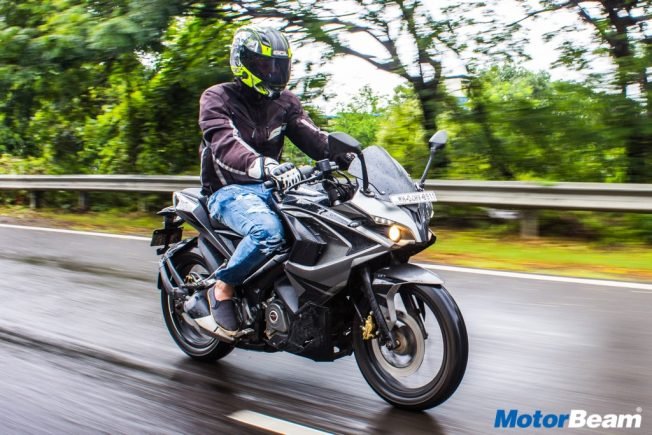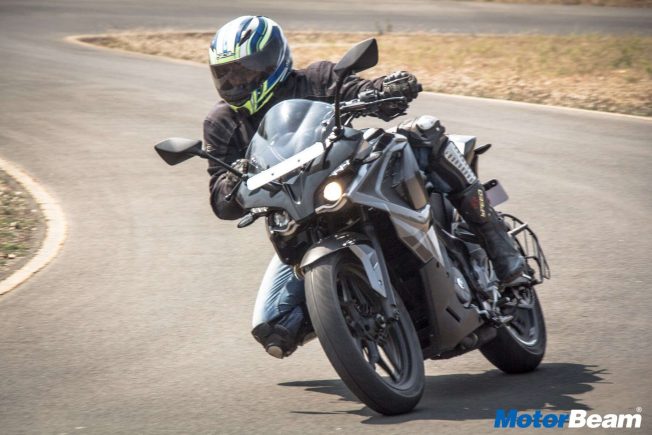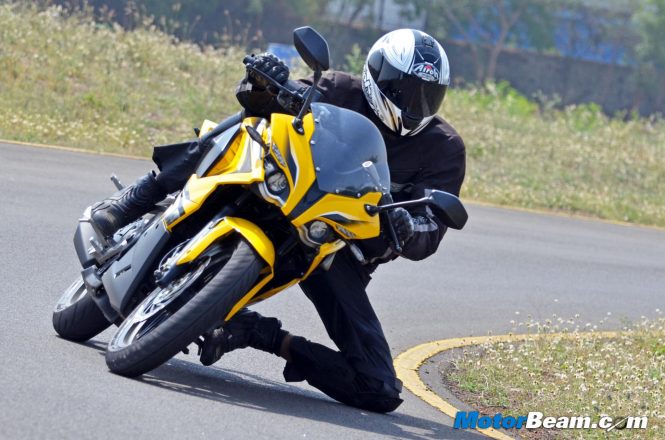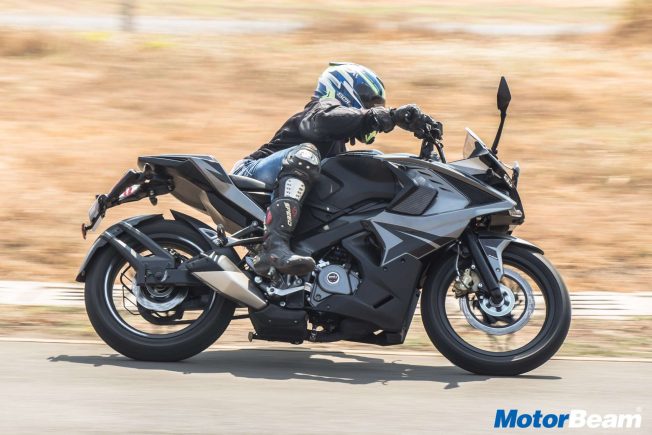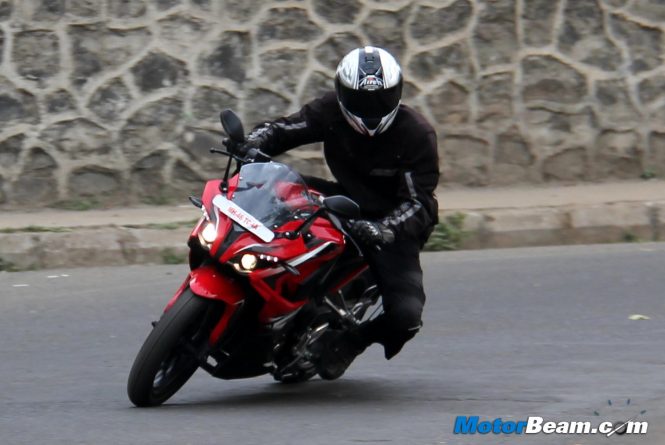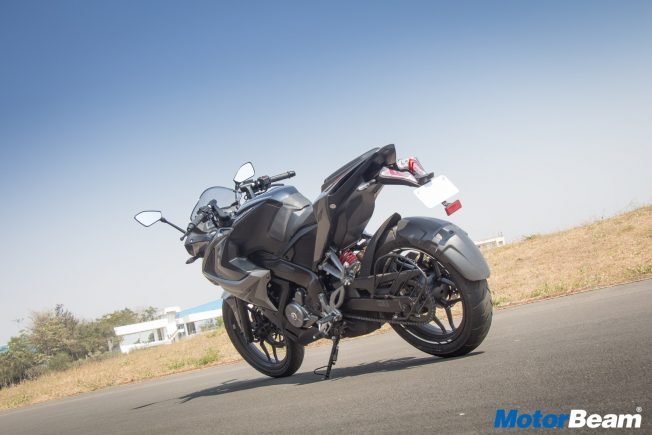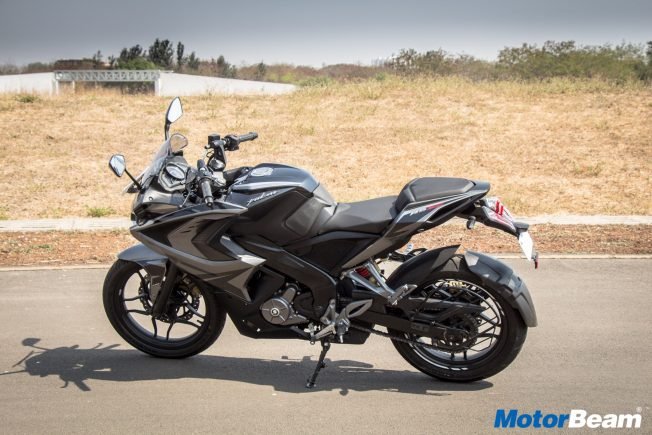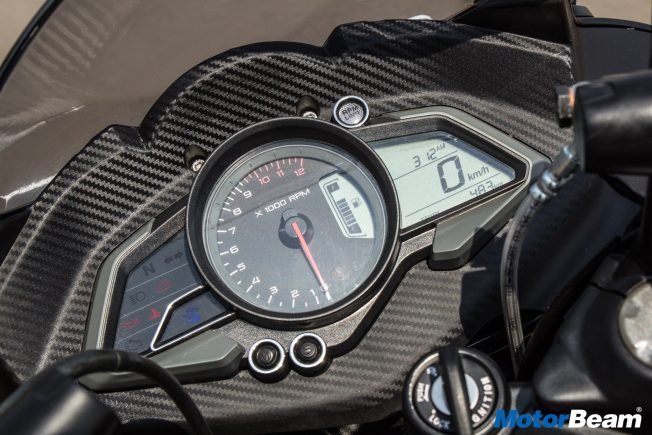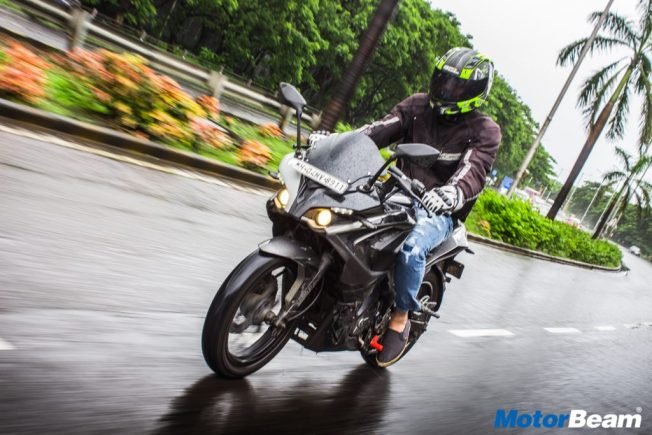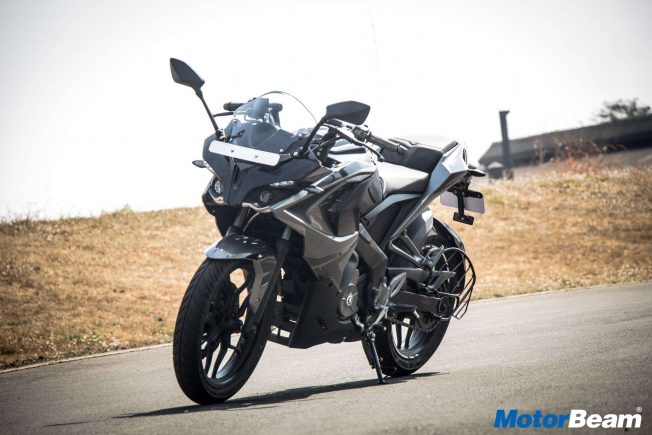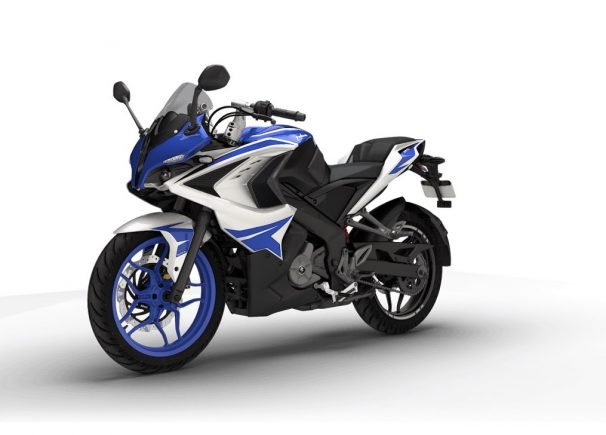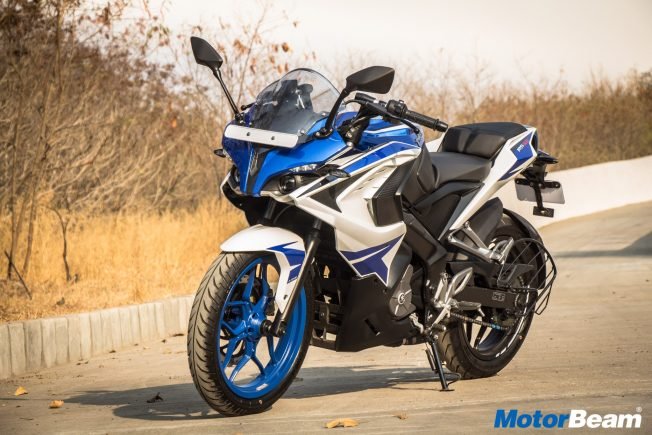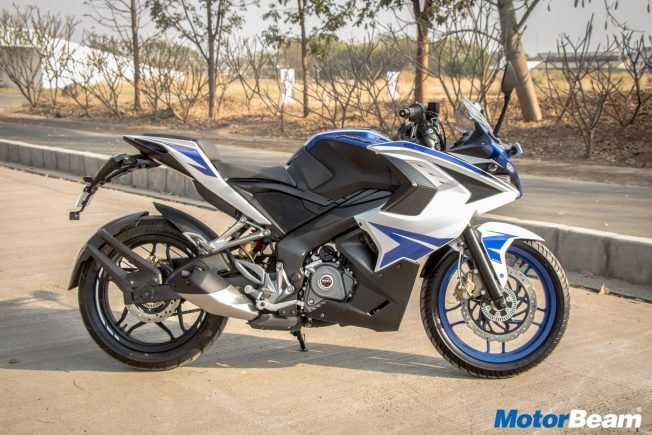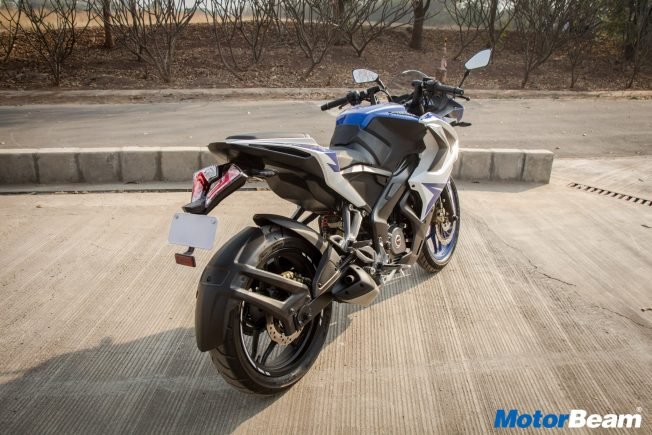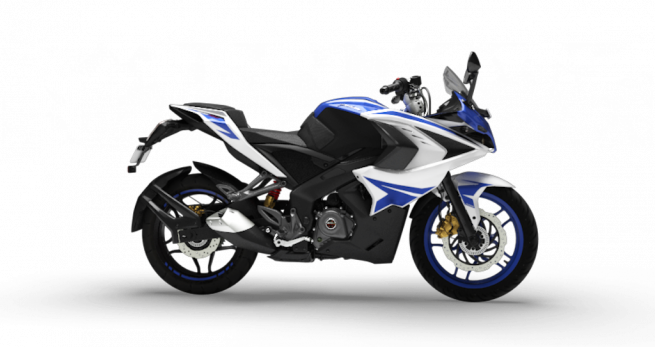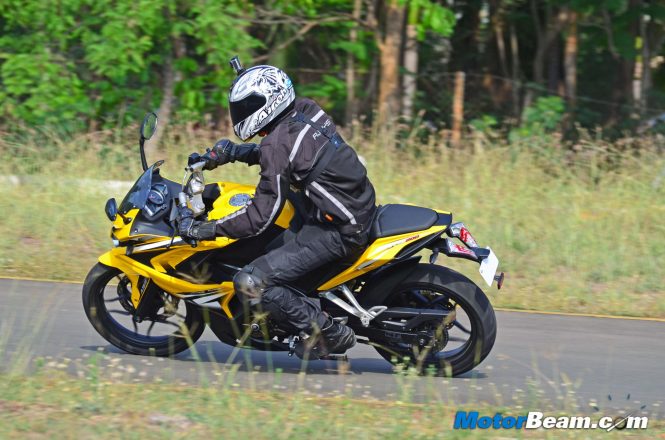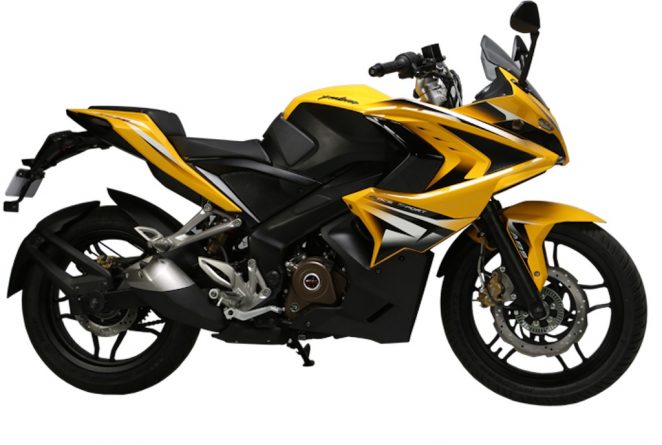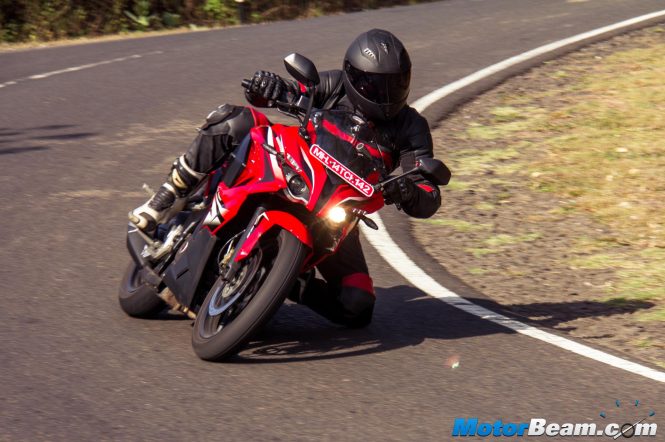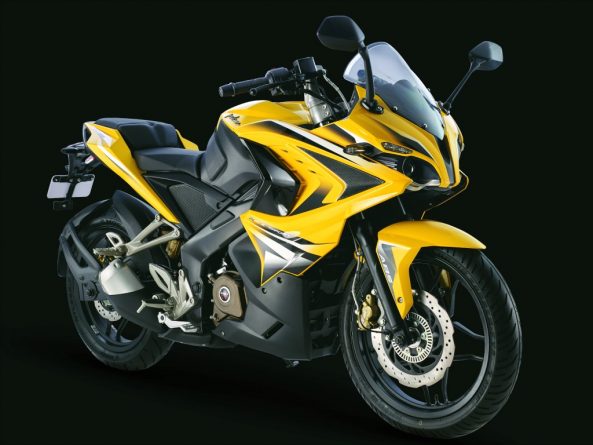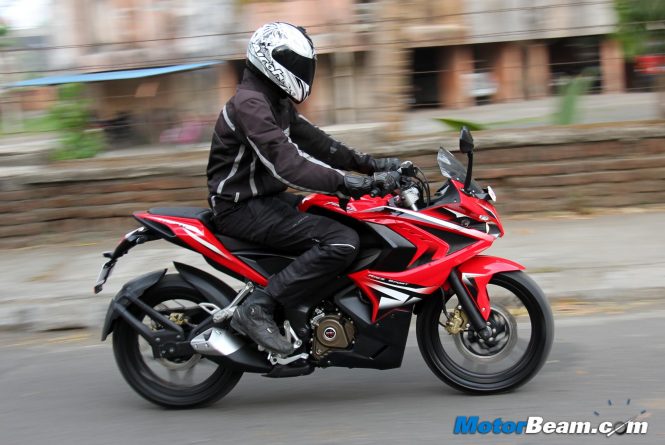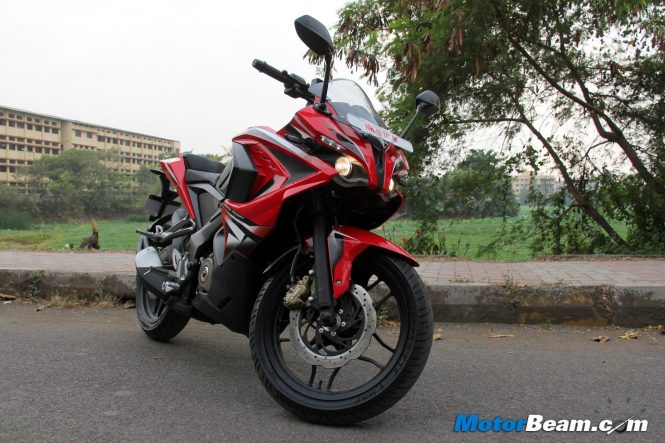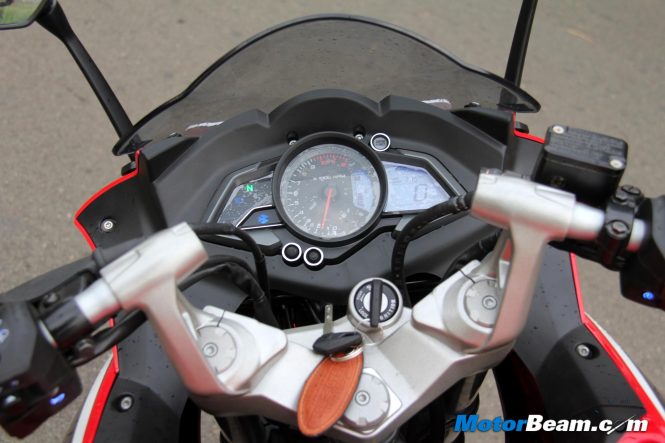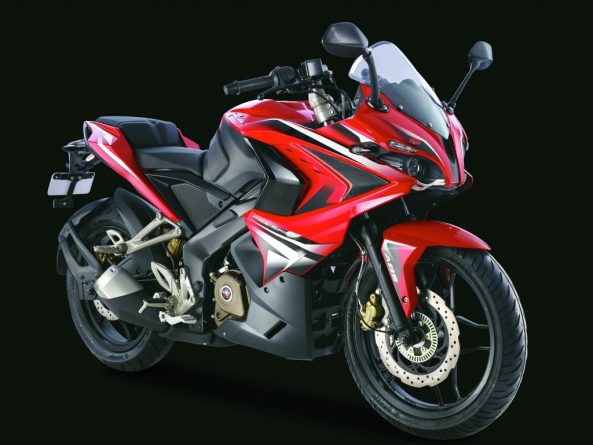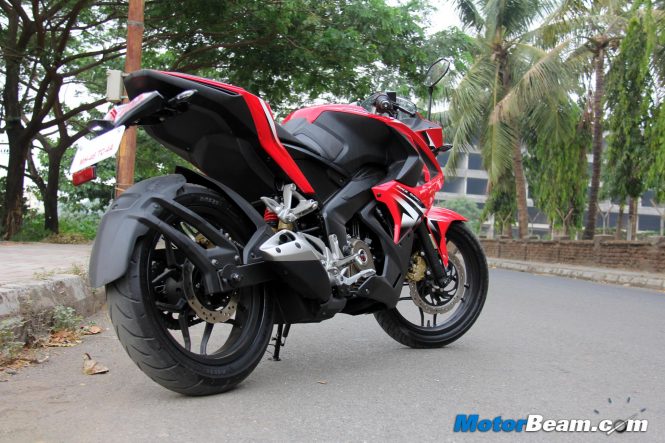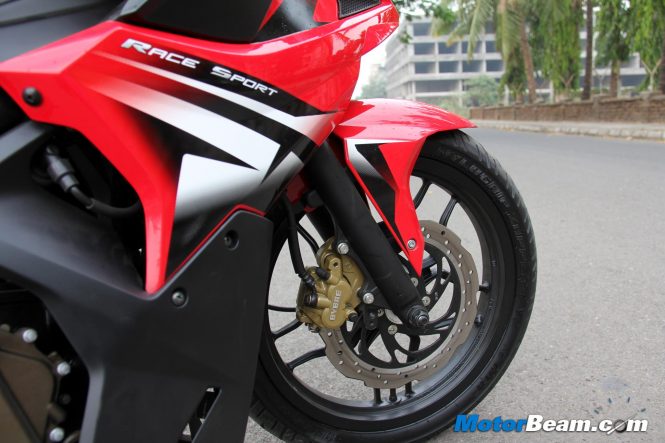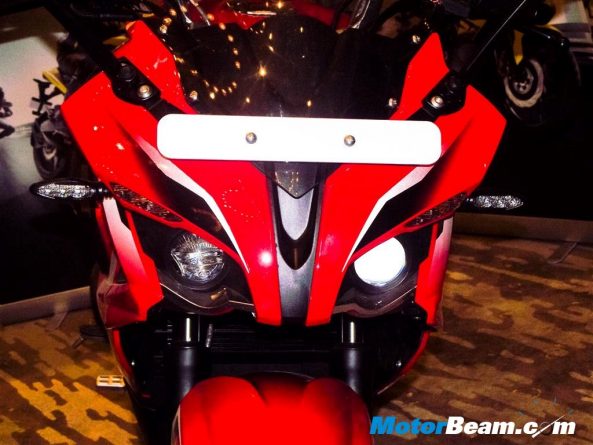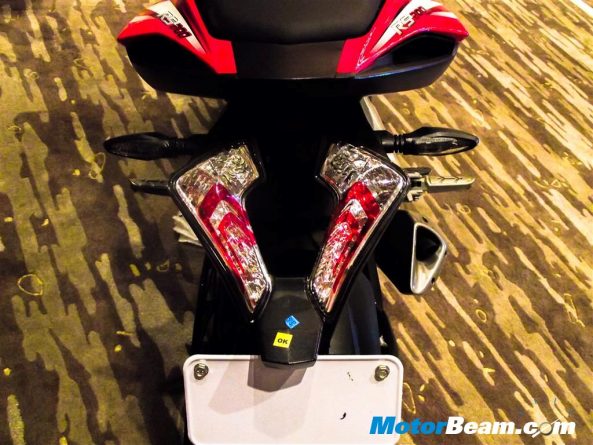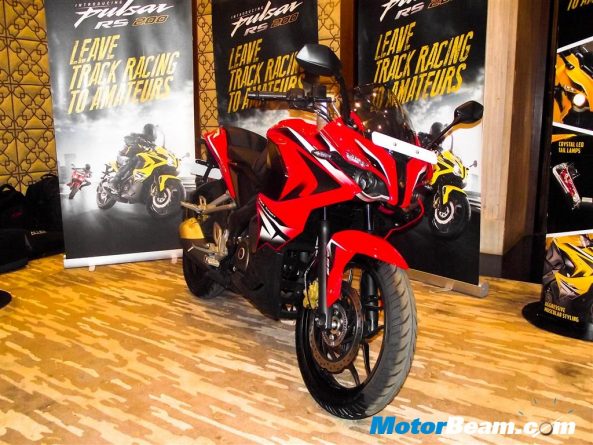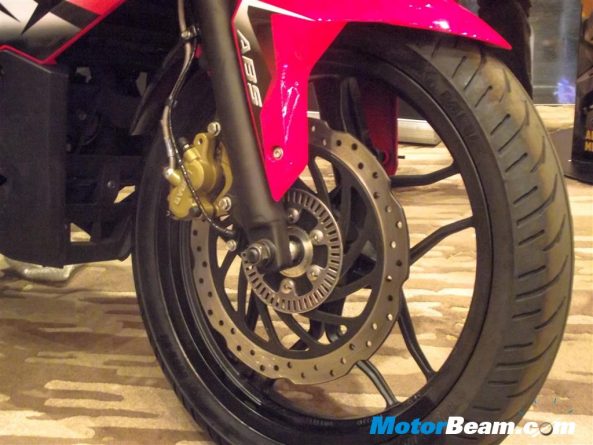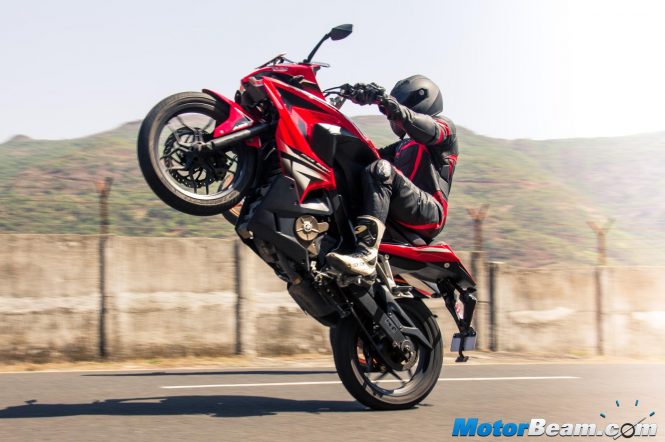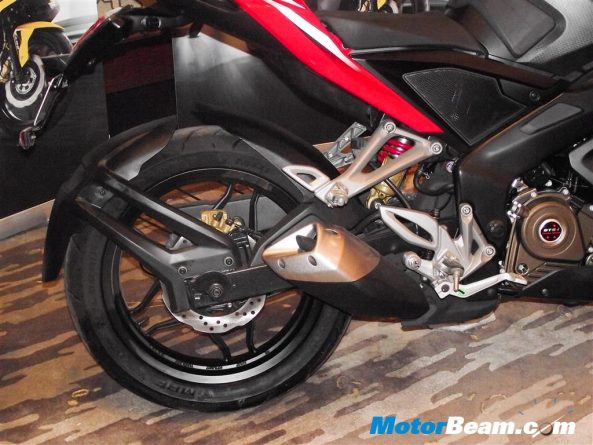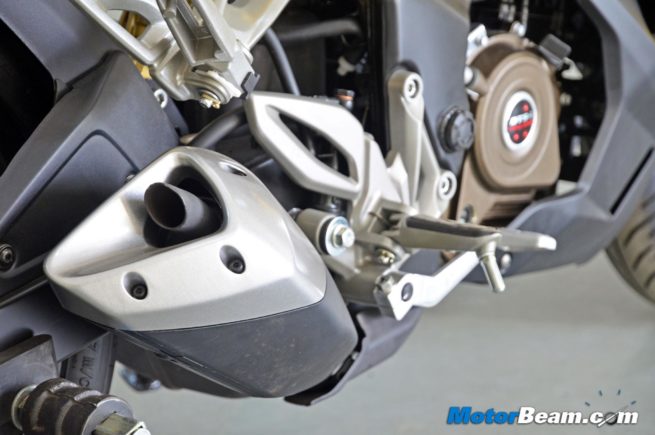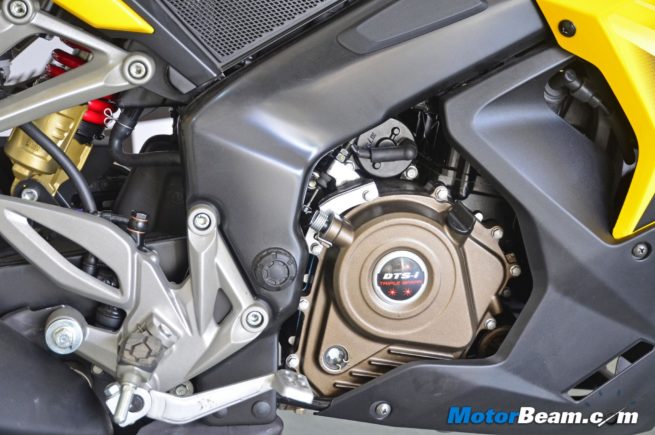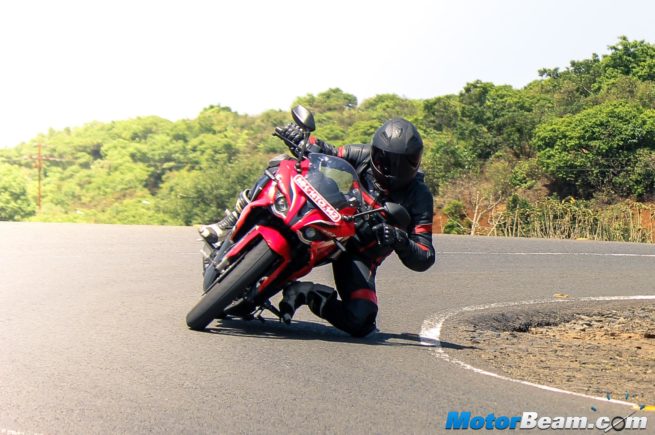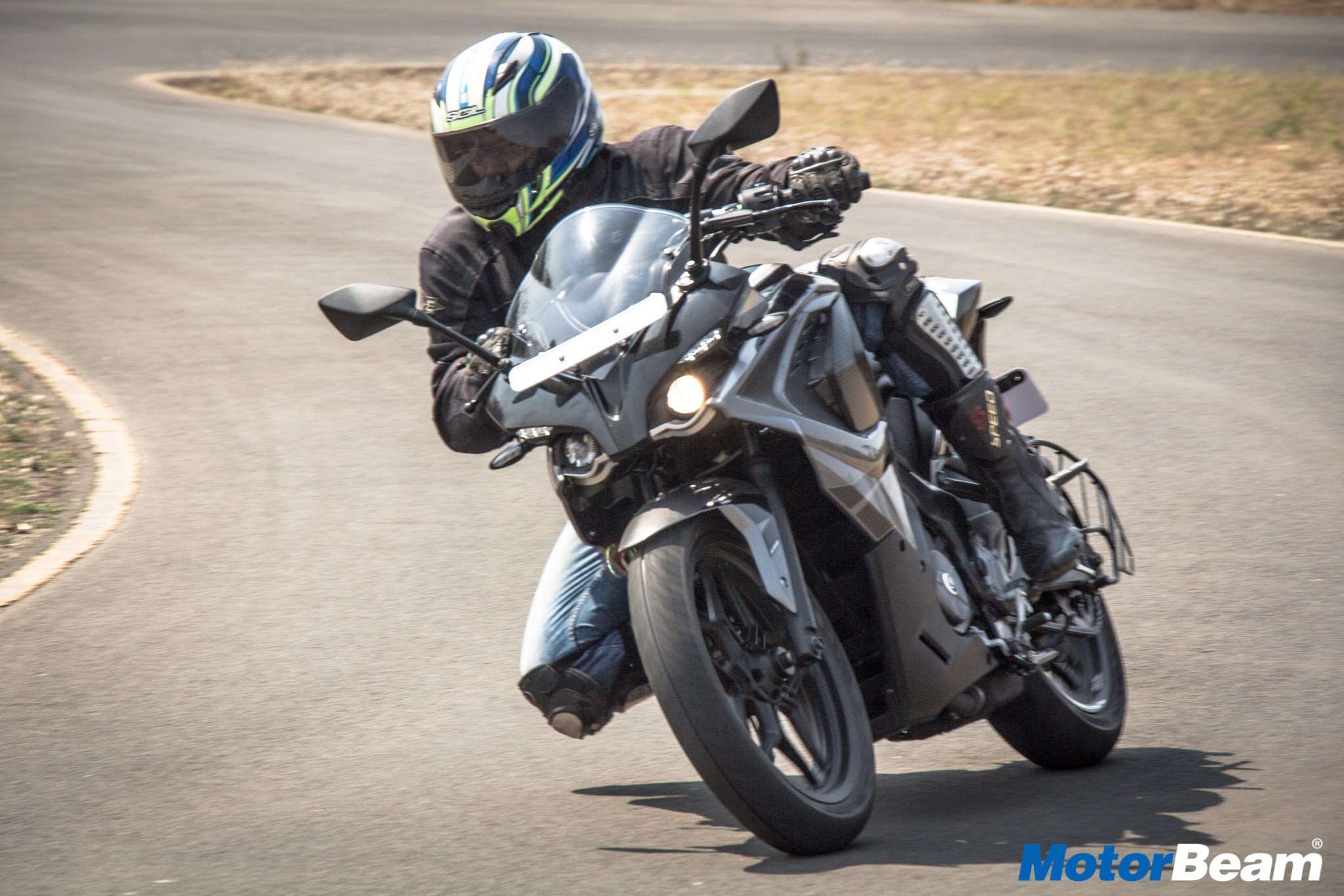
First launched in the year 2015, the Pulsar RS 200 sits atop the famed pulsar series as the flagship motorcycle from Bajaj. This motorcycle was the first-ever fully-faired offering from the Indian manufacturer, what’s more? It was the first-ever fully-faired Pulsar series motorcycle. As usual, anything bearing the Pulsar name is highly anticipated by throngs of avid motorcyclists in our country.
The Pulsar RS 200 did not take too long to amass a cult-like following of fans. The dragon-like design and beast-like performance this motorcycle offered were quickly recognized and celebrated across the country. Like other Bajaj motorcycles, the Pulsar RS 200 also has not received much attention from its maker in terms of major design and mechanical updates. Close to 5 years later, this motorcycle remains mostly unchanged. How does this motorcycle fare against its competition in this day and age where motorcycle brands are fighting tooth-to-tooth to gain the slightest edge over the other? Does it hold the same appeal over people it once did? Find out all about the above and much more in this detailed research analysis of our very own Indian mad machine, the Pulsar RS 200.
Pros: Refined Engine, Impressive Top-End, Unique Styling, Good Fuel-Efficiency
Cons: Dated Instrument Cluster, Slightly Overpriced, Small Section Tyres, Uncertain Build Quality
Bajaj Pulsar RS 200 Design
It’s safe to say Bajaj has truly outdone itself in designing their debut faired motorcycle making it arguably the most aggressive looking, muscular Pulsar of them all. The sharp crevices and elements present all over the body of the Pulsar RS 200 such as the Transformers-like faring on both sides, dual-projector headlamp at the front, functional visor(Or is it?), aggressive tank shape, and the intimidating colour schemes on offer makes this a one of a kind motorcycle on the road that never gets old.
The rear end of the motorcycle also contributes to the overall appeal of this motorcycle with blacked-out side panels emulating around the engine area and the rider’s seat. The Pulsar RS 200 gets body-integrated grab-rails and an exceptional tail lamp that looks very cool. The futuristic exhaust gets a chrome inlay that really sits well against the blacked-out rear alloy wheel.
The front wheel though, interestingly, varies in colour across the three colour options. The Racing Red variant gets a red alloy wheel at the front, the Racing Blue variant comes with a blue alloy wheel at the front. The Graphite Black variant, as you can guess, offers a black alloy wheel at the front. The rear wheel, however, is black across all the colour variants.
Bajaj Pulsar RS 200 Features
Being Bajaj’s flagship Pulsar, the Pulsar RS 200 is not really big on features. This motorcycle hosts the same instrument cluster available as its counterpart, the Bajaj Pulsar NS 200. The odometer and the speedometer are completely digital while the tachometer is of the analogue type. Although this cluster is highly informative, Bajaj could have introduced a more functional and better-looking set-up for the Pulsar RS 200. The rear-view mirrors available provide a decent line of sight and also look presentable.
On the mechanical side, This motorcycle comes fitted with a 199.5cc engine that is equipped with fuel injection and paired with a slick-shifting six-speed gearbox. The Pulsar RS 200 also gets dual-channel ABS and LED front and rear indicators that is common across the entire KTM lineup in India.
Bajaj Pulsar RS 200 Engine Performance
The Pulsar RS 200 is equipped with the same engine as that of the Pulsar NS 200, but, the performance on offer is not exactly the same at all. How is that so? Well, for one, Bajaj has tuned the powerband in aiding top-end performance which compliments the faired motorcycle. The top speed is around 135-145 km/h which is also fairly impressive.
This motorcycle features a 199.5cc, single-cylinder, liquid-cooled, fuel-injected, six-speed gearbox engine that produces 24.13 BHP at 9750 RPM and 18.7 Nm of torque at 8000 RPM while returning average fuel efficiency of 28-35km/l. The Pulsar RS 200, like every other Pulsar variant, is a motorcycle of great character that’s comfortable being revved hard and fast while still promising engine refinement. In fact, this motorcycle is at its best after 8000 RPM but does get bothered with a few vibrations in that range. Between 4000-8000 RPM is the smooth spot for this mean sporty machine.
Bajaj Pulsar RS 200 Mileage (or Fuel Efficiency)
Time and again, Bajaj has delivered motorcycles that are practical and powerful. The Pulsar RS 200 is not different by any means. In city riding conditions, if ridden economically, one can expect 28-32 km/l. On the highway, one can expect anywhere between 32-35 km/l.
The 13-litre fuel tank is ample for touring purposes with a total riding range of about 400-450 km. The use of the sixth gear and adapting economic riding practices may increase the overall fuel efficiency of this motorcycle by quite a bit.
Bajaj Pulsar RS 200 Handling (or Dynamics)
The Pulsar RS 200 is accurate, controlled, and precise at handling as it’s always been. The ease at which this motorcycle commands the road has been impressive. The ride-quality defining attributes of this motorcycle like the chassis frame and front and rear suspension is shared with the Pulsar NS 200. But, there is a world of difference. The riding triangle is much more aggressive and demands the rider to bend relatively more. The clip-on handlebars are placed as such to assist a sports-tourer type feeling but also a motorcycle that can be taken to the track on the weekend.
What makes the Pulsar RS 200 so great at handling? The telescopic front fork suspension accompanied by the ‘Nitrox’ mono shock absorber at the rear provides for an attentive setup that really responds well with the rider in corners. The steel perimeter frame which the motorcycle sits upon distributes the kerb weight of 166 kg splendidly on the road but not so much off of it. This motorcycle, like many other Bajaj motorcycles, could have done with wider section tyres to better improve its handling capabilities and enhance the cornering calibre of this motorcycle to a great extent.
Bajaj Pulsar RS 200 Comfort (or Ergonomics)
The Pulsar RS 200 is not the most comfortable of the Pulsar offerings, and no, it’s not just because of its faired setting. The suspension setup is rather stiff and could have been softer. But, in Bajaj’s defence, it’s not uncommon for faired motorcycles to tune on the stiffer side to improve cornering abilities. The seats are split and offer sufficient room for the rider and the pillion, but, could have been a whole lot softer. The foot-pegs are rear-set but still offer a semi-dedicated riding posture for the rider further aiding touring capabilities on this motorcycle.
The seat height of the Pulsar RS 200 is 810 mm which is not convenient for most people in our country and paired with the kerb weight of 166 kg, this motorcycle may seem daunting on paper, but, excellent ride quality on offer should make up for this.
Bajaj Pulsar RS 200 Safety (or Brakes)
The Pulsar RS 200 boasts a very impressive braking setup on both ends. It comes equipped with a 300 mm front petal disc and a 230 mm rear petal disc that provides excellent stopping power and more than adequate brake bite.
The dual-channel ABS feature is like icing on top of the cake that makes braking on this motorcycle fairly easy and stress-free. The petal disc is known to eliminate over-heating of the discs caused by intense braking and increase the life of both, the brake pads and the disc.
Bajaj Pulsar RS 200 Service
Bajaj being a well-established motorcycle brand has stood the test of time and proved resilient in all its endeavours. They offer a wide range of authorised service centres and showrooms across the country where people can buy their motorcycles and get them promptly serviced, at an affordable cost. The average service interval for the Pulsar RS 200 is anywhere between 4000 to 6000 km, this particular two-wheeler should cost you somewhere between Rs. 800/- to Rs. 2000/- for its service.
Bajaj Pulsar RS 200 Price
Following is the price of the Pulsar RS 200 (on-road, Mumbai) –
- Bajaj Pulsar RS 200 BS6 – Rs. 1,77,145/-
Bajaj Pulsar RS 200 Resale Value
Bajaj is a brand that promises motorcycles that are easy to maintain, sturdy, and have a respectable build quality. The Pulsar RS 200 should have a fairly adequate resale value depending on the mileage on the odometer, accidents(if any), and overall maintenance.
Bajaj Pulsar RS 200 Colours
The Pulsar RS 200 is available in the following colours:
- Pewter Grey
- Metallic Pearl White
Bajaj Pulsar RS 200 Specs
- Engine: 199.5cc, Liquid-Cooled, Fuel-injected, 4-Stroke, Single-Cylinder
- Power: 24.13 BHP at 9750 RPM
- Torque: 18.7 Nm of torque at 8000 RPM
- Transmission: 6-speed Manual
- Top Speed: 140 km/h
- Fuel Consumption: 28-35 km/l
- Fuel Type: Petrol
- Chassis: Perimeter Frame
- Suspension: Telescopic Forks (Front) Nitrox Mono Shock Absorber (Rear)
- Tyres: 100/80/17 Tubeless (Front), 130/70/17 Tubeless (Rear)
- Brakes: 300 mm Petal-Disc (Front), 230 mm Disc (Rear)
Bajaj Pulsar RS 200 Dimensions
- Length x Width x Height: 1999 mm x 765 mm x 1114 mm
- Wheelbase: 1345 mm
- Ground Clearance: 157 mm
- Seat Height: 810 mm
- Fuel Tank Capacity: 13-litres
- Kerb Weight: 166 kg
Bajaj Pulsar RS 200 Rating
We give the Pulsar RS200 a 4/5 rating.
Bajaj Pulsar RS 200 vs Yamaha YZF R15 V3
The Yamaha YZF R15 V3 needs no introduction in this comparison. Widely recognized for its excellent handling characteristics, sublime design, uncompromising performance, and highly commendable fuel efficiency, the Yamaha R15 is the complete sports-motorcycle package. Both the motorcycles share similar mechanical builds meaning they both come equipped with a single-cylinder, liquid-cooled, fuel-injected, six-speed gearbox engine that produces power linearly through the RPM range. Both the motorcycles also share dual-channel ABS in common.
In a direct comparison with the Pulsar RS 200, the Yamaha R15 is lighter by almost 24 kg. Owing to this advantage and other mechanical advancements, the Yamaha R15 handles much better than the Pulsar RS 200. But, that comes at the price of a highly dedicated riding posture prone to body aches and sores. Do not write the Indian motorcycle off just yet! The Pulsar RS 200 is a much faster motorcycle, both, on paper and on the road and has a better service out-reach. If you’re not convinced yet, maybe this fact will help. Both the Yamaha R15 and the Pulsar RS 200 are priced almost exactly identical to each other! The choice is yours to make.
Bajaj Pulsar RS 200 vs KTM RC 200
An infamous battle of the masses when it comes to these two motorcycles and which one’s better. Frankly, there’s no right answer when it comes to such high calibre, quality motorcycles. The KTM RC 200 seems to compete in a league of its own in terms of its incomparable performance, awesome design, unparalleled handling, and reliable build quality. Both the motorcycles share similar mechanical builds meaning they both come equipped with a single-cylinder, liquid-cooled, fuel-injected, six-speed gearbox engine. Both the motorcycles also share dual-channel ABS in common.
On paper, both the motorcycles produce more or less the same power figures but the Austrian offering is close to 6 kg lighter lending it a slight advantage. The overall build and ride quality on the KTM is also superior to that of the Bajaj motorcycle. But, all things considered, the KTM is close to Rs. 60,000/- dearer for all the bells and whistles it offers. Doesn’t seem as appealing as it once did, now, does it? To further add perspective, the KTM RC 200 returns lesser fuel-efficiency figures, costs more to get serviced, and requires higher maintenance. The KTM RC 200 is a better motorcycle, but, the Pulsar RS 200 is a better investment on any given day. We’ll let you choose.
Final Verdict
Like all other Bajaj motorcycles, the Pulsar RS 200 is a bang-for-buck investment of your money. The outright performance and handling capabilities of this motorcycle make it extremely versatile in all circumstances, the affordable service and maintenance cost also comes as a huge plus point. The cornering capabilities go well with the excellent power-to-weight ratio. The impressive fuel-efficiency figures go hand-in-hand with the high-revving nature of this engine. The sweet sound of the exhaust note paired with the sharp design of the Pulsar RS 200 demands a keen presence on the road.
Wider section front and rear tyres along with an updated instrument cluster would have sealed the deal for us but we honestly cannot complain. The Pulsar RS 200 is a value-for-money motorcycle at its best. It always was and still is. We hope this article has helped provide some clarity and hopefully aided you before your big purchase. Thank you for reading and ride safely. Cheers!


